
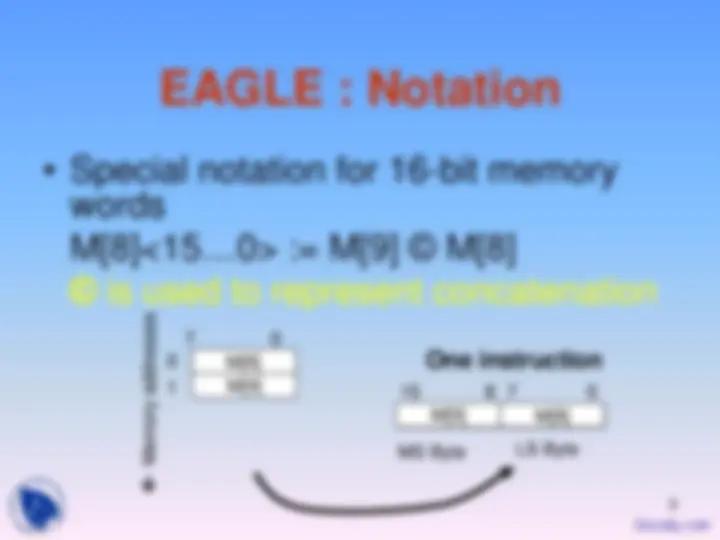
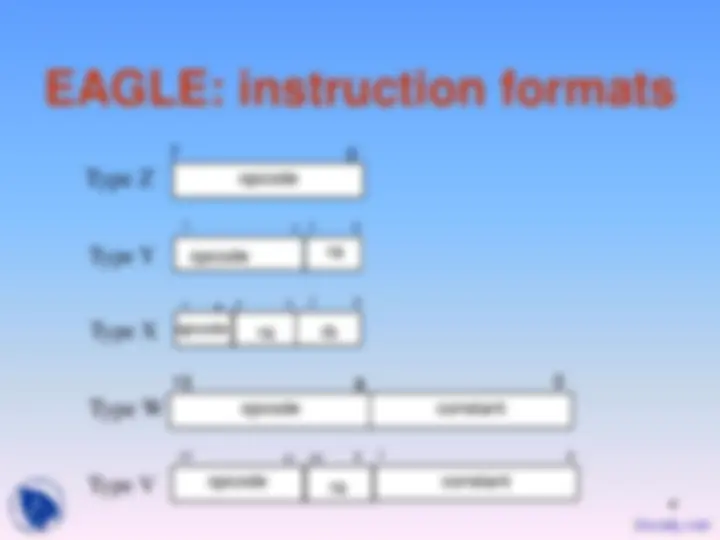







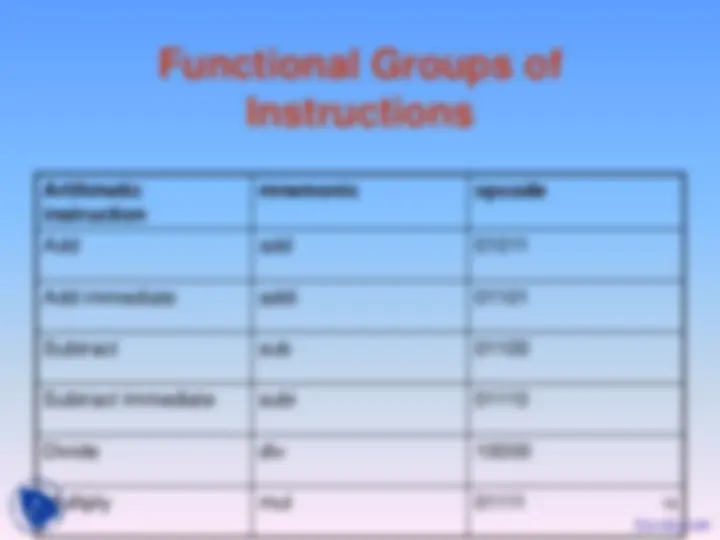

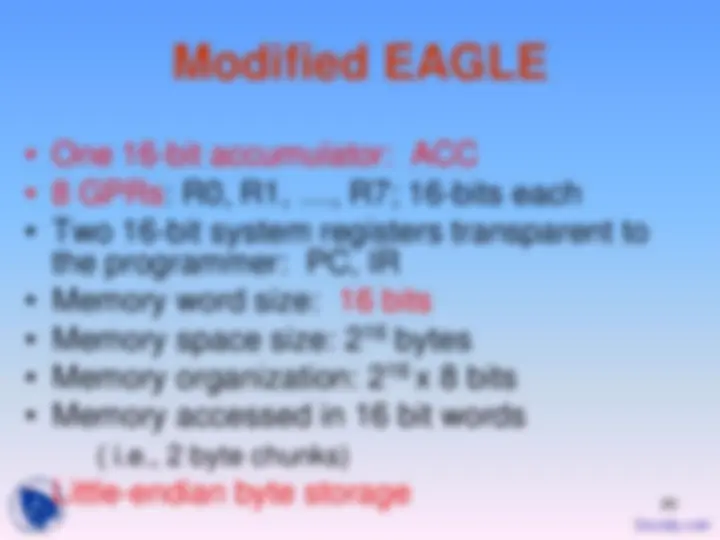
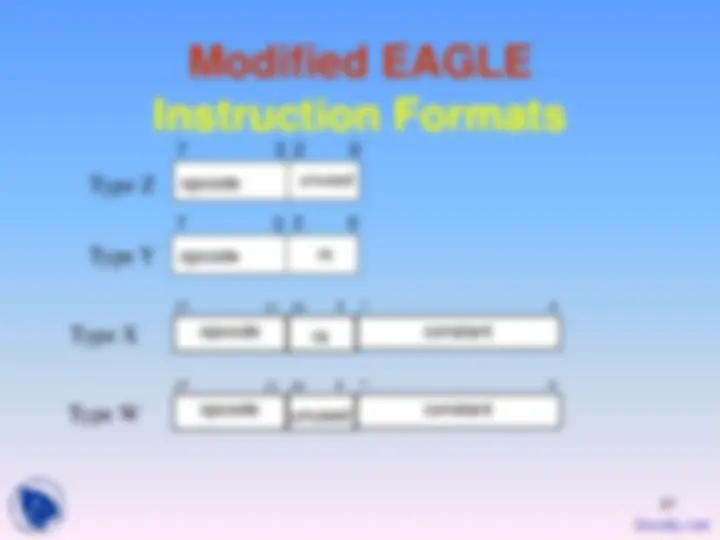


Study with the several resources on Docsity

Earn points by helping other students or get them with a premium plan


Prepare for your exams
Study with the several resources on Docsity

Earn points to download
Earn points by helping other students or get them with a premium plan
Community
Ask the community for help and clear up your study doubts
Discover the best universities in your country according to Docsity users
Free resources
Download our free guides on studying techniques, anxiety management strategies, and thesis advice from Docsity tutors
Programmer View of the EAGLE, Main memory, CPU, Notation, Instruction formats, Encoding for the GPRs, Data Transfer Instruction are the topics professor discussed in class.
Typology: Slides
1 / 21

This page cannot be seen from the preview
Don't miss anything!














1
15 0 R R
R Register file
IR PC
2
4
opcode
(^7 ) ra
0 Type Y
Type W opcode
(^158) constant
0
15 11 10 8 constant
7 0 Type V opcode^ ra
7 6 ra
5 3 rb
2 0 Type X opcode^ ra rb
Type Z^ opcode
(^70)
2
5
Encoding for the GPRs to be used in place of ra or rb.
Register Code Register Code
R0 000 R4 100
R1 001 R5 101
R2 010 R6 110
R3 011 R7 111
7
add (op-code = 11) add r1 R[0] R[1] + R[0]
and (op-code = 19) and r5 R[0] R[1] & R[0] div (op-code = 16)
div r6 R[0] R[0] / R[6] R[6] R[0] % R[6] mul (op-code = 15) mul r4 R[0] R[0] * R[4]
(^7 ) ra
0
8
not (op-code = 23) not r6 R[6] !R[6] or (op-code=21) or r5 R[0] R[0] ~ R[5]
sub (op-code=12) sub r7 R[0] R[0] – R[7]
opcode
(^7 ) ra
0
10
opcode
(^158) constant
0
11
addi (op-code = 13) addi r4, 31 R[4] R[4] +
andi (op-code = 20 ) andi r6, 1 R[6] R[6] & in (op-code=29) in r1, 45 R[1] IO[45] load (op-code=8)
load r3, 6 R[3] M[6]
15 11 10 8 constant
7 0 opcode (^) ra
13
loadi (op-code=9)
loadi r5, 54 R[5] 54 ori (op-code=22) ori r7, 11 R[7] 11 ~ R[7] out (op-code=30) out 32, r5 IO[32] R[5]
15 11 10 8 constant
7 0 opcode (^) ra
14
shiftl (op-code=17)
shiftr( op-code=18)
store (op-code=10)
subi (op-code=14)
15 11 10 8 constant
7 0 opcode (^) ra
16
Data Transfer Instruction
mnemonic opcode
Input in 11101
Output out 11110
Move mov 00
Load from memory load 01000
Load constant loadi 01001
Store into memory store 01010
17
Branch if negative brn 11100
Branch if not zero brnz 11001
Branch if zero brz 11010
Branch if positive brp 11011
Branch br 11111100
19
Logic Instruction mnemonic opcode
And and 10011
And immediate andi 10100
Or or 10101
Or immediate ori 10110
Not not 10111
Shift left shiftl 10001
Shift right shiftr 10010
20